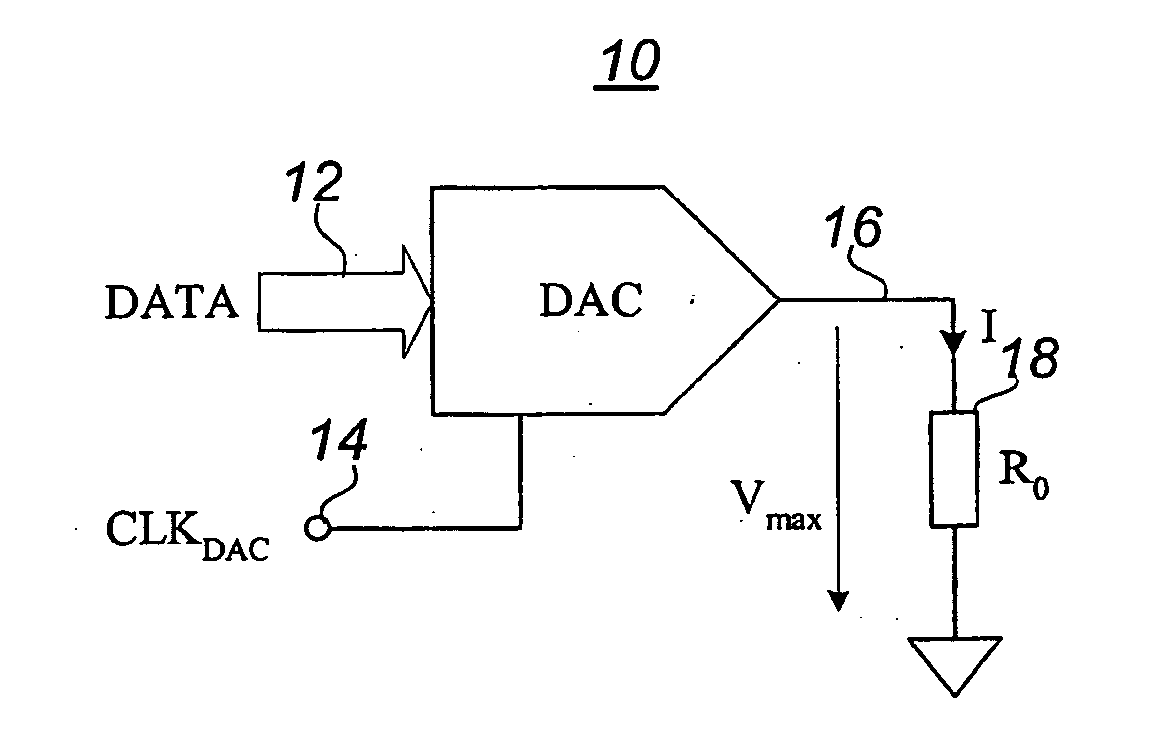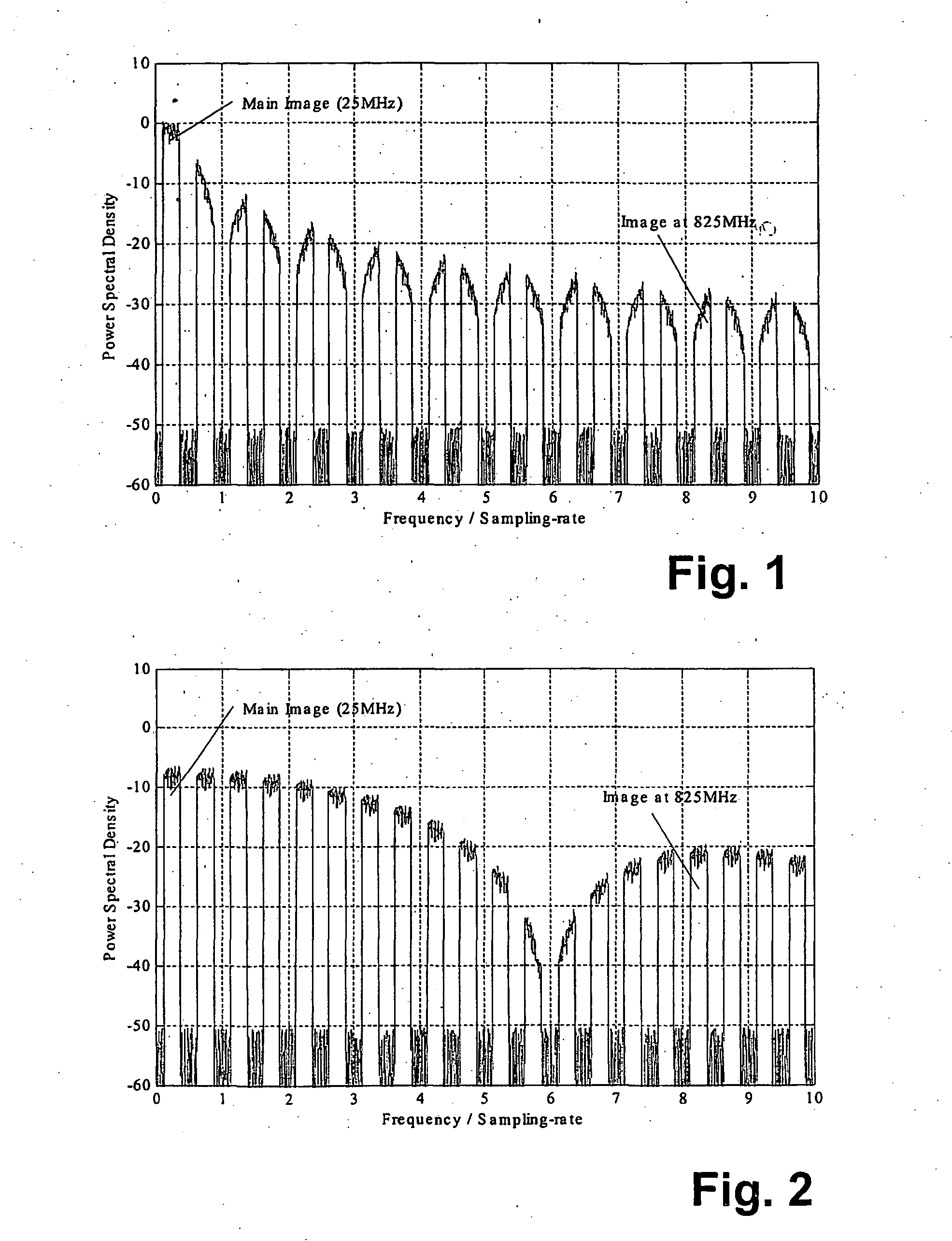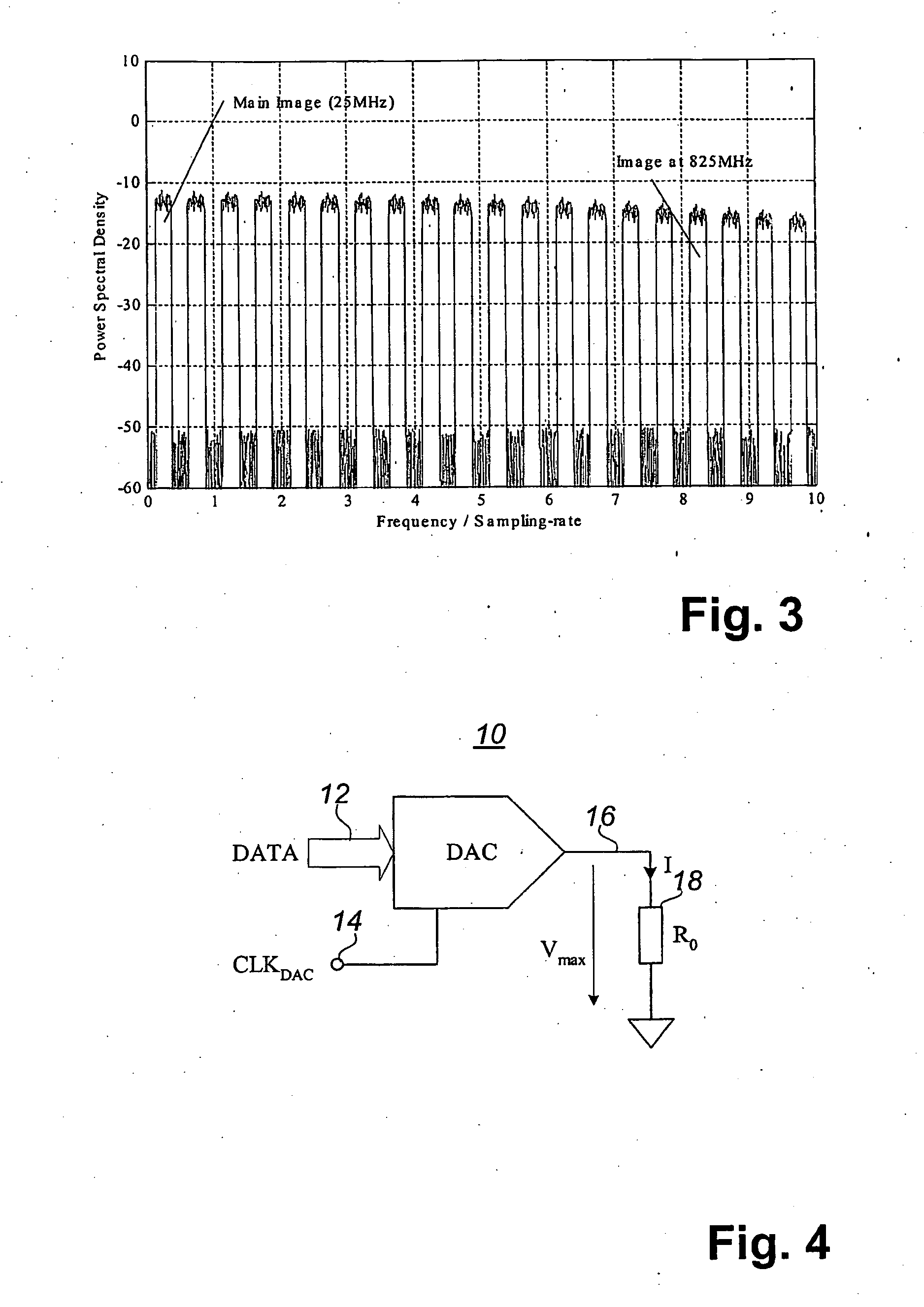Method and apparatus for direct digital to rf conversion using pulse shaping
a technology of pulse shaping and digital to rf, applied in the direction of electrical apparatus, modulation transference, transmission, etc., can solve the problems of inability to achieve inability to achieve the performance of main image, and proportional decrease in energy per sample, etc., to achieve shorten the dac pulse, facilitate the obtaining of flat or near flat output spectrum, and reduce the loss of signal energy
- Summary
- Abstract
- Description
- Claims
- Application Information
AI Technical Summary
Benefits of technology
Problems solved by technology
Method used
Image
Examples
first embodiment
Referring to FIG. 5 there is illustrated a digital-to-analog converter (DAC) with pulse shaping in accordance with the present invention. The DAC 10 has a data port 12 a clock input 14 and in the output 16. The output 16 is coupled to the load resistor 18′ through an inductor 20. A pair of switches 22 and 24 are operable to couple either side of the inductor 20 to ground.
In operation, with the pulse shaping method as described with regard to the first embodiment of the present invention, the energy produced by a current-output DAC 10 every sample is stored in the inductor 20 during a first stage and then released from the inductor 20 to the load 18′ during a second stage. The first stage lasts for a time (1−a)T while second stage lasts for a time aT. The principle of the method is shown in FIG. 5. The inductor 20, with value L, is used to store temporarily the energy. T is the load resistor 18′, a value of R. The first switch 22 (SW1) stays closed in the first stage and opens in se...
second embodiment
Referring to FIG. 7 there is illustrated a digital-to-analog converter (DAC) with pulse-shaping in accordance with the present invention. The DAC 10 has a data port 12 a clock input 14 and in the output 16. The output 16 is coupled via first and second switches 30 and 32 to a load resistor 34. A capacitor 36 is coupled between the first and second switches 30 and 32 and ground.
In operation, with the pulse shaping method as described with regard to the second embodiment of the present invention, the energy produced by a voltage-output DAC every sample is stored in a capacitor during a first stage and then released from the capacitor to the load during a second stage. The first stage lasts a time (1−a)T while second stage lasts a time aT. The principle of the method is shown in FIG. 7. The capacitor 36 having a value C is used to temporarily store the energy output by the DAC 10. The load resistor 34 has a value R. The switch 30 (SW1) stays open during the first stage and is closed f...
PUM
 Login to View More
Login to View More Abstract
Description
Claims
Application Information
 Login to View More
Login to View More - R&D
- Intellectual Property
- Life Sciences
- Materials
- Tech Scout
- Unparalleled Data Quality
- Higher Quality Content
- 60% Fewer Hallucinations
Browse by: Latest US Patents, China's latest patents, Technical Efficacy Thesaurus, Application Domain, Technology Topic, Popular Technical Reports.
© 2025 PatSnap. All rights reserved.Legal|Privacy policy|Modern Slavery Act Transparency Statement|Sitemap|About US| Contact US: help@patsnap.com



